Tudor Oysterthin: Not extra, not ultra
Clymer on collecting; Coggins on watches; Biggie’s crown
The thinnest watch ever from Tudor
Tudor and Rolex don’t really do thin anymore. Even the new Oyster Perpetual 36 measures about 12mm in thickness. It’s a shame, really.
It wasn’t always this way: from 1957 through 1963, Tudor produced the Oysterthin, an unassuming model with a manual wind caliber that just happened to be squeezed into the thinnest Oyster case ever produced. While not technically a complication, understanding how a watch can get so thin is no less difficult to grasp than understanding the inner machinations of a perpetual calendar. And for most of horological history, some of the most exciting arms races between brands involved making the ultra thin even more thin.
Rolex also experimented with thin watchmaking, producing the unbearably named Veriflat and Verislim (see my in-depth article on the Rolex Veriflat here) in the 1950s. However, those watches were produced only in precious metals, while the Oysterthin sports a stainless steel Oyster case.
What is the Tudor Oysterthin Reference 7960?
Credit: Tudor Watch
As Tudor explains, the Tudor Oysterthin was the first extra-thin watch in a waterproof case:
The thinnest watch ever made by Tudor, only 6 mm thick, [the Ref. 7960] is a very rare model, produced in small number for only a few years, from 1957 to 1963. In the late 1950s, it went down in watchmaking history as being the thinnest waterproof Tudor wristwatch. Today it remains one of the Tudor timepieces most sought-after by collectors.
It features an extra-thin waterproof steel case 34 mm in diameter and 6 mm thick. [It is] powered by the extra-thin calibre 2402 – 3.6 mm thick, 23.7 mm in diameter – easily recognisable by its three rubies screwed into the top plate. It beats at a frequency of 18,000 beats per hour.
Some of this is Tudor hyping itself up: I’m not sure the Oysterthin is that “sought after” by collectors — I mean, no one’s really bothered to write about it until now. But, it’s surely a rare watch, and one that (in my opinion) is often under-appreciated by modern collectors.
With the Verislim and Veriflat having preceded the Oysterthin, this model is another instance of Tudor taking something from Rolex and putting its own, quirky spin on it. While Rolex thought of thin watchmaking as a feature to be added to dressy, precious metal watches, Tudor said, “f/ck it, let’s just make a thin Oyster sports watch and see if anyone buys it.” Well, it turns out not that many people bought it. But with Rolex footing the bill, who really cares? It’s kind of like Tudor trying out a manual wind Submariner (Ref. 7923), or even throwing a Snowflake hand on its Submariner because it could. See what sticks and all that, right?
It’s a Thin line
While Piaget, Vacheron Constantin, and other brands were competing to manufacture the thinnest this-or-that in the 1950s (and indeed, still do today. Okay, yes — you too, Bulgari), Tudor was content sticking the thin, manual wind ETA caliber 2402 into its slim effort. And there’s nothing wrong with that: of course, using off-the-shelf ETA movements was Tudor’s whole modus operandi. Leave the delicate, fancy watchmaking for someone else. It’s not like you could make a steel, waterproof case much thinner than the 6mm thick Oysterthin case anyway. The Reference 7960 case ends up a good 4mm thinner than the Tudor Reference 7934, a manual wind Oyster from the same era. While so many other brands were busy with the endless pursuit of “extra” or “ultra” flat, Tudor was happy with just Oysterthin — no more, no less. That no-B.S. approach is why I love Tudor.
At 6mm, the Tudor Oysterthin (L) is 4mm thinner than a typical Oyster Prince (R)
Interestingly enough, the Oysterthin seems to wear a bit bigger than a typical Tudor Oyster Prince or Rolex Oyster Perpetual of the era — perhaps because it sits flatter on the wrist. What’s more, there’s something decidedly impractical about having to unscrew the screw-down crown every day to manually wind the ETA caliber that’s actually endearing.
Collecting the Oysterthin
It’s not terribly difficult to find an Oysterthin, though finding a desirable example in good condition (as with any watch that’s 60 years old) is increasingly difficult. Most examples feature the silver dial common on most Tudor Oyster Prince models, with the word Oysterthin printed below the Tudor rose logo. You’ll find a variety of dial configurations, with the most common featuring simple stick indices, sometimes with a crosshair that stretches across the dial. Usually, the indices will be topped with lume plots, though that’s not always the case. Rarer examples will feature Arabic numerals — often in an Art Deco-style font — typically at 3, 6 and 9. Instead of the common applied indices, some dials employ indices that are carved into the dial.
Credit: Wanna Buy A Watch?
As I’ve mentioned before, I have a thing for slate grey dials. So when I saw the charcoal grey dial Oysterthin (above) on Tudor’s website, I knew I had to have it. It seems this is a particularly rare dial variant, and I haven’t seen more than a couple pop up in the time I’ve been casually interested.
In addition to Oysterthin, Tudor also used the model name “Elegante” (yes, quotation marks included) for the Reference 7960. To me, the Oysterthin branding is more clean, simple and no B.S. (more Tudor), and more closely related to Rolex’s earlier Veri- line of watches (i.e., the Wildsorf marketing team was out enjoying their Swiss PTO in the mountains and responded to an email while skiing down the Alps, “le, just name it Oysterthin!”). There’s just something about branding a watch “Elegante” that strikes me as remarkably tacky. A watch should just be elegant, and not feel the need to broadcast itself as such.
Tudor “Elegante” Ref. 7960 | Credit: Blackbough
Listen, is the Oysterthin going to go from a couple-thousand-dollar watch to the price of a Piaget Altiplano Ultra-thin (the current “thinnest watch in the world”)? No, of course not. It’s a thin, 34mm watch — the appeal is inherently limited. But, it’s a cool watch from an interesting time in Tudor history that should be more than just a footnote in the brand’s story.
There are so many watches in the back catalogs — even of popular brands like Rolex and Tudor — with interesting stories that, if collectors reach beyond the typical hit list of Submariners, GMT-Masters and Explorers, they might be thrilled to discover and collect. To me, the Oysterthin is one of those watches.
Sponsor
This weekend’s newsletter is sponsored by eBay. With eBay’s new Authenticity Guarantee, most watches sold above $2,000 will be automatically authenticated. After purchasing a watch that is covered by eBay’s Authenticity Guarantee, it will be shipped directly to eBay’s third-party authenticator. There, the expert authenticator will perform a meticulous inspection on the timepiece, verifying each part of the watch, also checking it against the original listing and description. Then, the authenticator will safely ship it off to the buyer via expedited and insured shipping.
The best part? Authenticity Guarantee is included in your watch purchase or sale. That’s right, peace of mind for free, whether you’re the buyer or seller.
Through the Wire
🎣 David Coggins on watches:
“I just want a watch. I want a good watch, I want to be happy with it, I want it to look like something my grandfather could have and I want it to look like something my grandson could have … as soon as I hear the word ‘movement’, I’m out. But that’s what men are going to do, they’re going to learn way more about it than is ever useful.
Sidebar: Coggins’ weekly podcast with Michael Williams (A Continous Lean) is a must-listen. Their bundle newsletter, Central Division (which gives you access to both Coggins’ and Williams’ writing), is one of the best things happening in newsletters right now.
📹 Clymer on collecting. On Friday evening, I tuned into the NYC Watch Crew and Cornell Horological Investment Club’s Zoom get-together with Hodinke CEO Ben Clymer (h/t Brendan). It was awesome to hear Clymer speak for about 90 minutes (and pull out a couple million in watches — a steel 8171 has a way of doing that). A part that particularly resonated with me was when Clymer gave collecting advice to a Cornell senior who expressed interested in obtaining stainless steel sports Rolexes: “Think deeply about why you want anything,” Clymer said. “Do you want it because you can’t get it, or is it something that really speaks to you?” He also implored the student to think about whether Rolex is something that you want to represent you in the world. The brand means a lot of things to a lot of people (both positive and negative) and Clymer mentions this is something he has remained acutely aware of. Words to live by.
🖍 Swatch’s new 1983 collection — a re-interpretation of the original line of Swatches from (you guessed it!) 1983, is pitched as bringing bio-sourced materials to the classic Swatch form. At $70, picking one up is practically a no-brainer.
👑 Biggie’s crown sold for $600k at Sotheby’s Hip Hop auction this week. Who would pay half a million for a (plastic) crown ?! etc. etc. I recently discovered the Dearest newsletter, focused on antique and estate jewelry. It gave a nice preview (including Biggie’s crown) of various lots of the Sotheby’s Hip Hop auction held earlier this week. Meanwhile, the NYT too observed that auction prices are seemingly sky-high.
⌚️ The Big Apple. It seems radical that Rolex would bring a few bright new colors to its Oyster Perpetual line, until Apple releases its new Watch Series 6 and you remember that it offers literally an infinite number of color combo/strap options. There’s been a lot of hand-wringing about whether Rolex truly drew inspiration from its Stella dials from the 1970s or the colorful aftermarket Rolex dials popularized by Ken Jacobs, and then companies like LaCalifornienne. Apple’s keynote this week is a reminder that Rolex is probably trying to keep up with a much larger (and scarier) foe than some small company that’s selling a few colorful redials on Goop. The only thing more stylish than a colorful Apple Watch is a colorful Rolex.
🚣♀️ Row your boat. Barron’s profiled friend-of-the-program and (more importantly) Rowing Blazers’ founder Jack Carlson:
Carlson’s passion for history is integral to the brand. “Pieces of clothing are artifacts, just like a piece of pottery, a coin, or piece of jewelry,” he says. In fact, many of Carlson’s designs are inspired by his sprawling collection of vintage blazers he has amassed over the years, “much to my girlfriend’s dismay.”
⛳️A PGA Tour pro’s blackface joke turns into a lesson on empathy. A beautiful story about learning, empathy, and how to change.
Also, Eric Ku and Michael Friedman talking AP for an hour is about as good as it gets. Thanks for reading! -Tony
—
For all the latest, head to rescapement.com and follow us on Instagram.





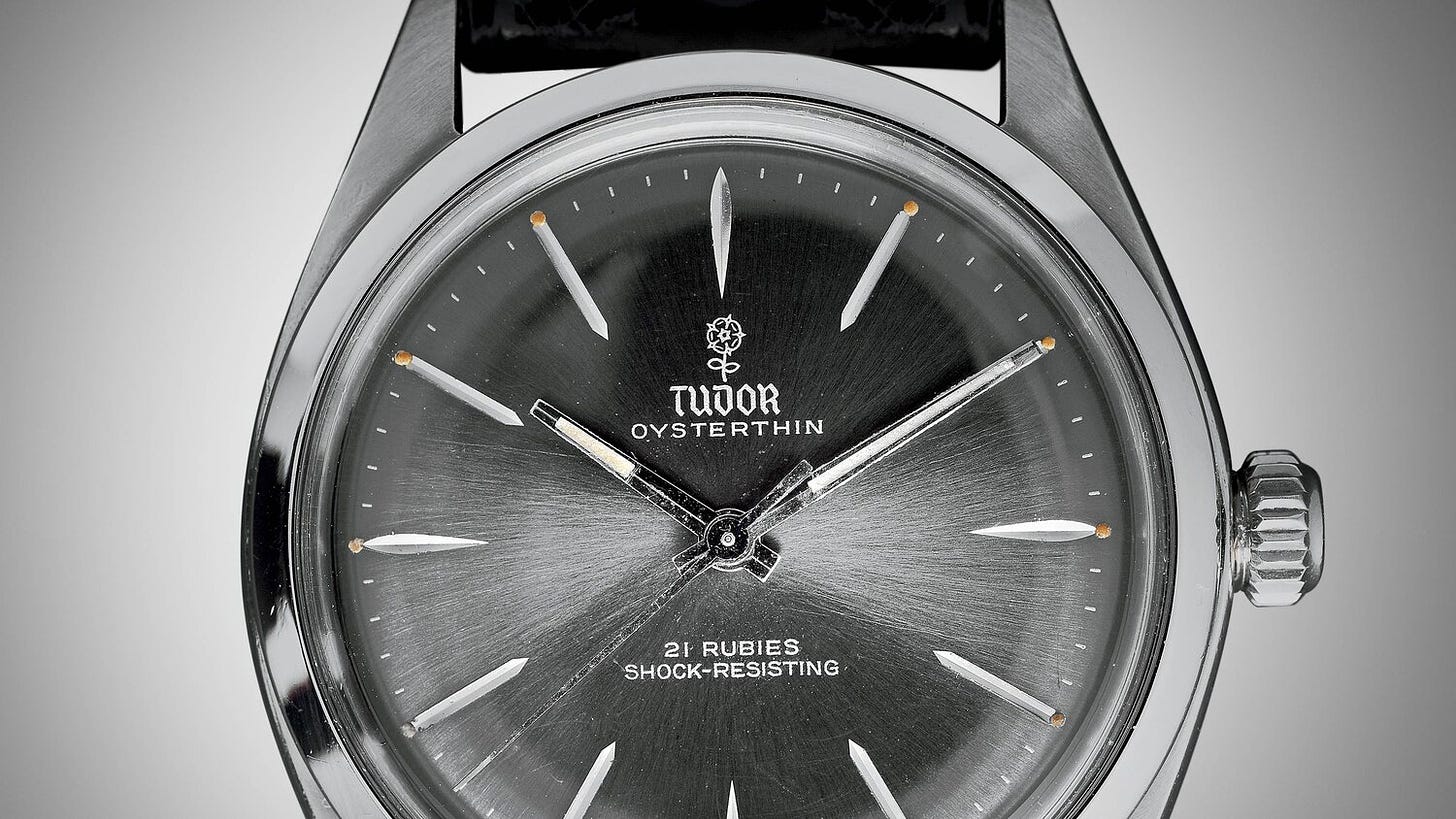
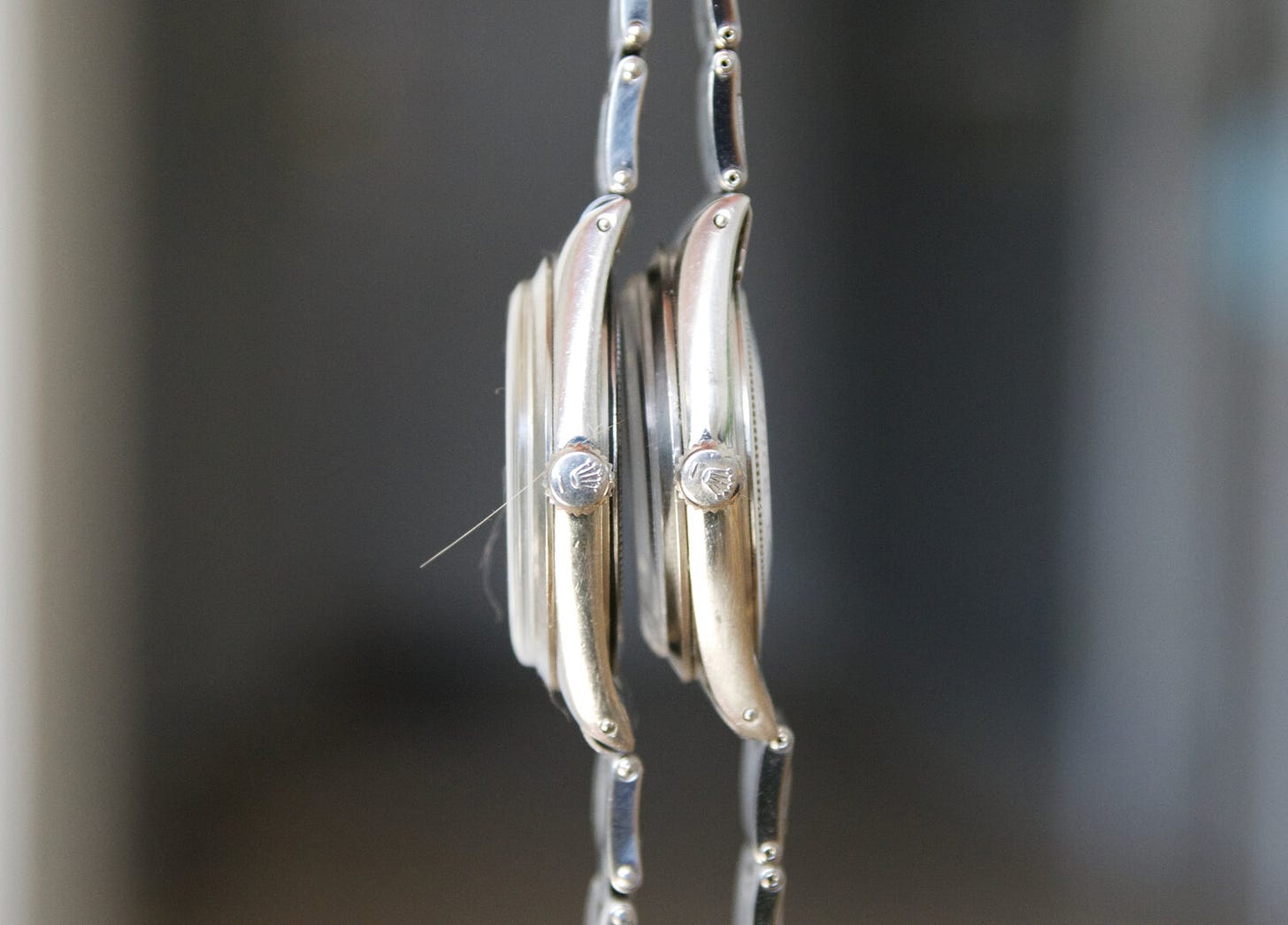
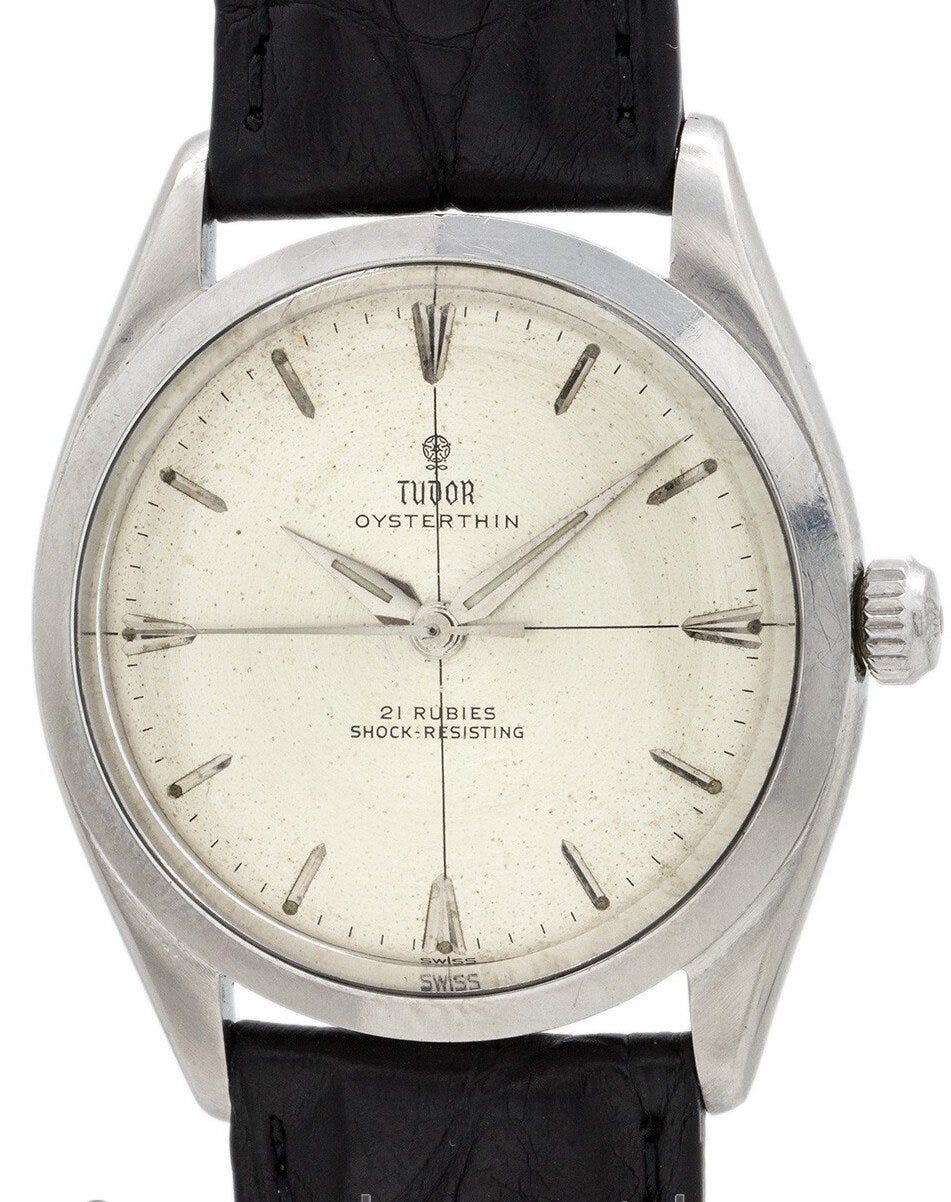
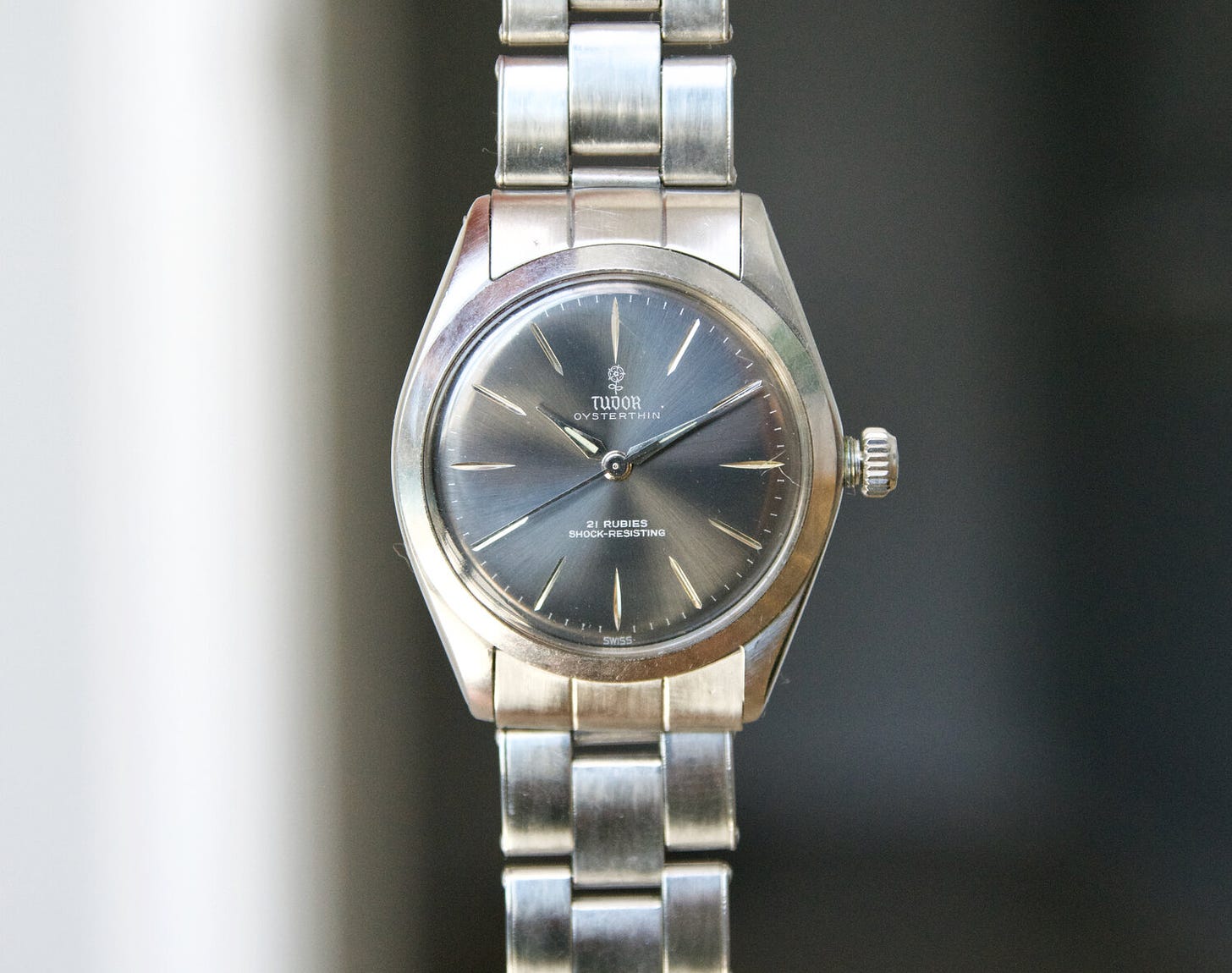
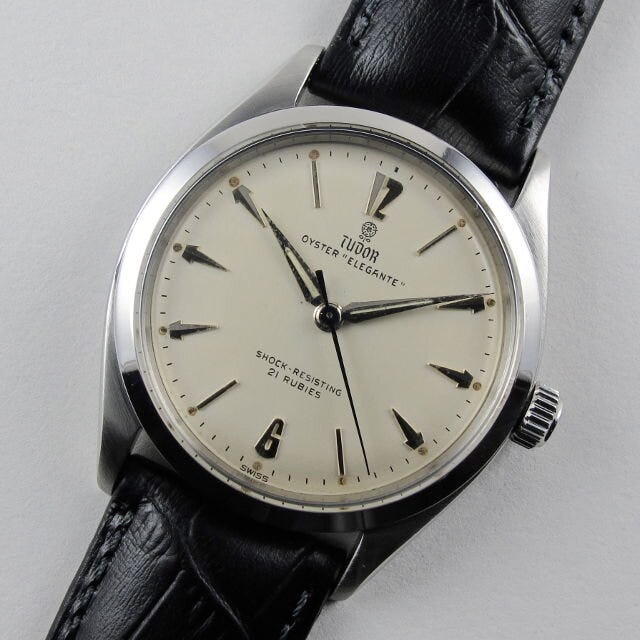

Hi there. I have recently purchased a Tudor Oysterthin and was wondering if there is supposed to be any reference numbers in between the lugs as I can’t see any on mine. Regards Andrew
Hi my name is Terry , i have recently acquired a Vintage Oyster i belive the number is 7934 which i have traced back to 1964 ..i just cant find any more info on this watch ..can i send you some photos to help me find out more about this watch ...Thanks Terry....emaile is good for me , not so tech savvy ...